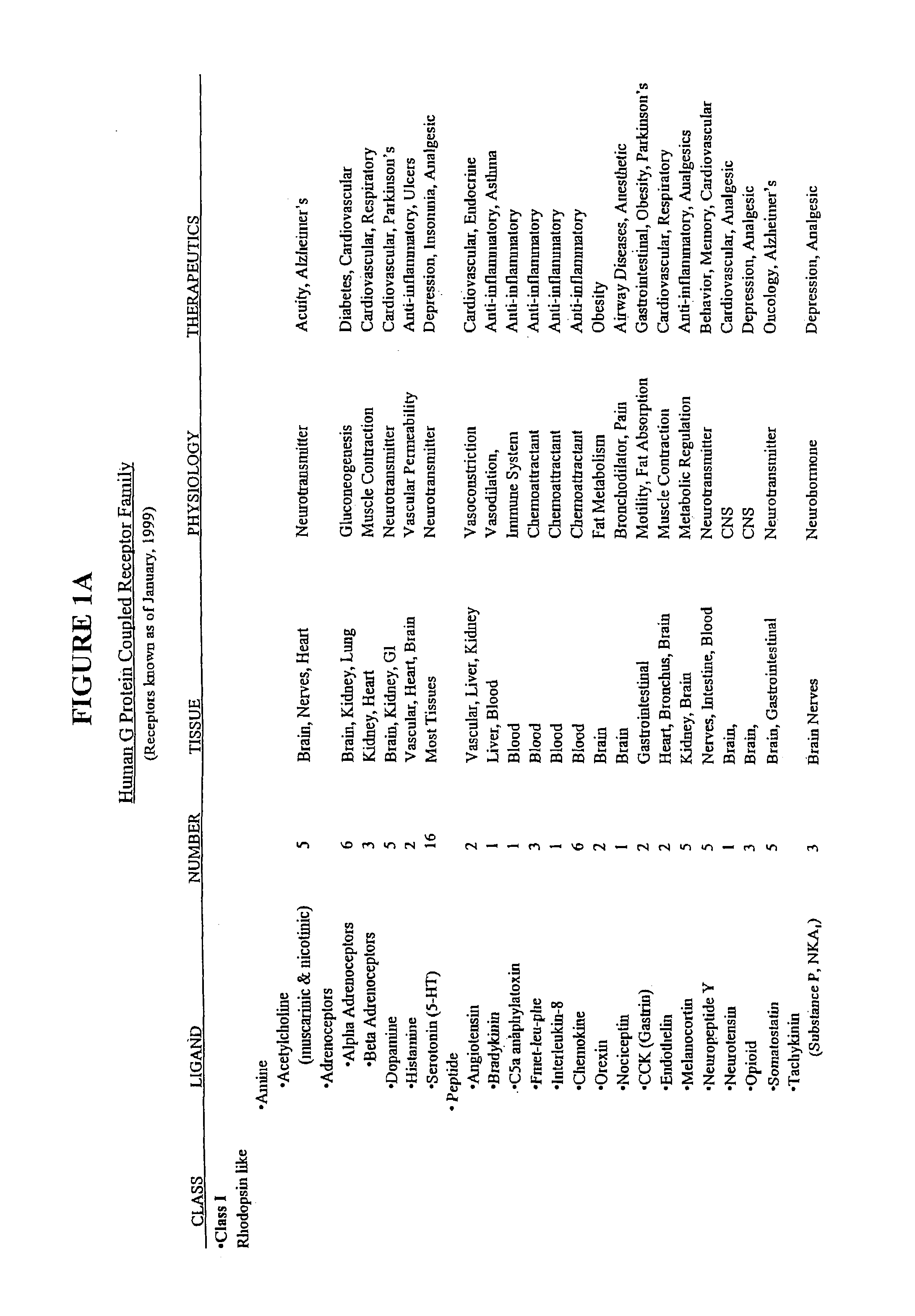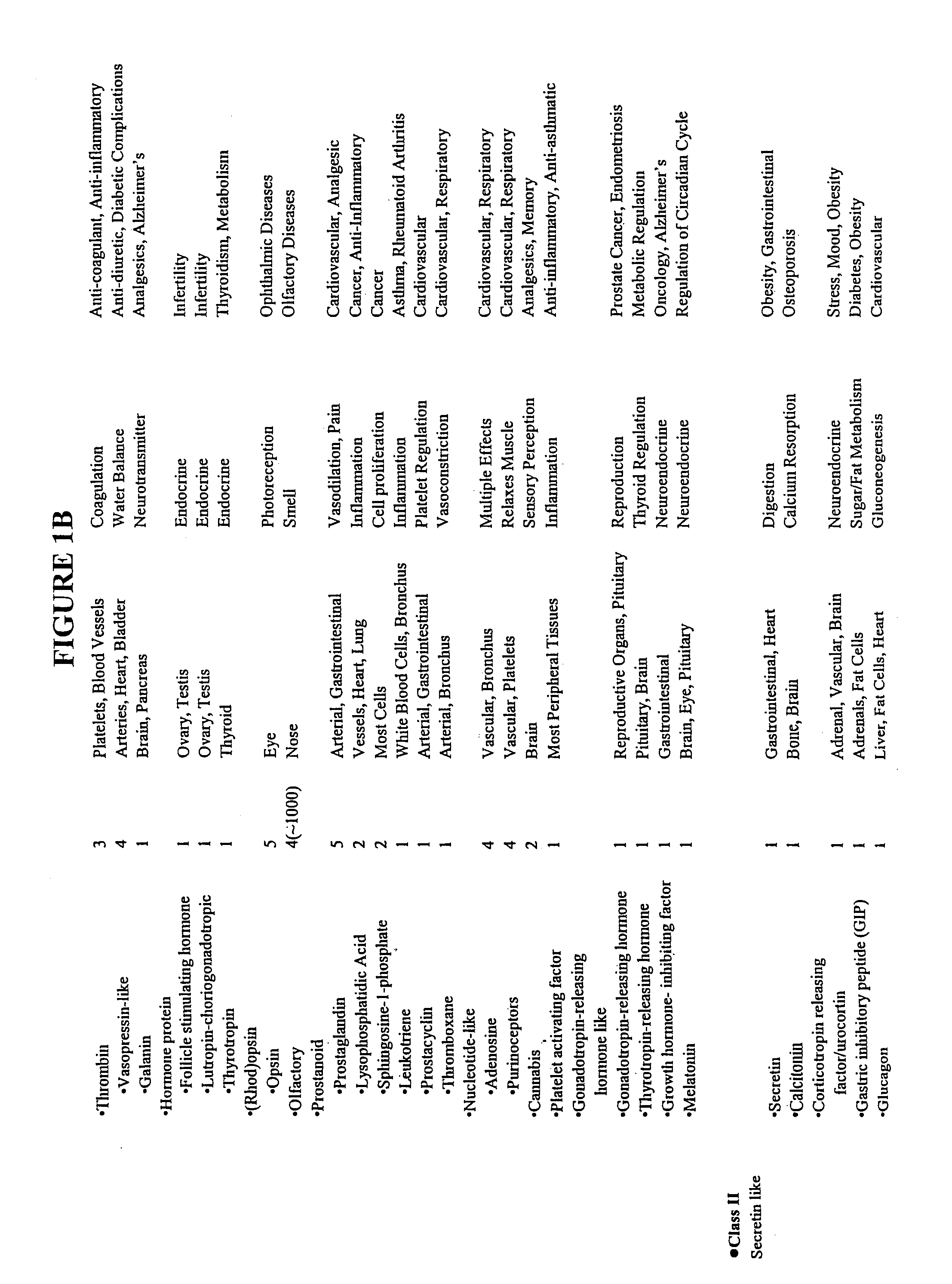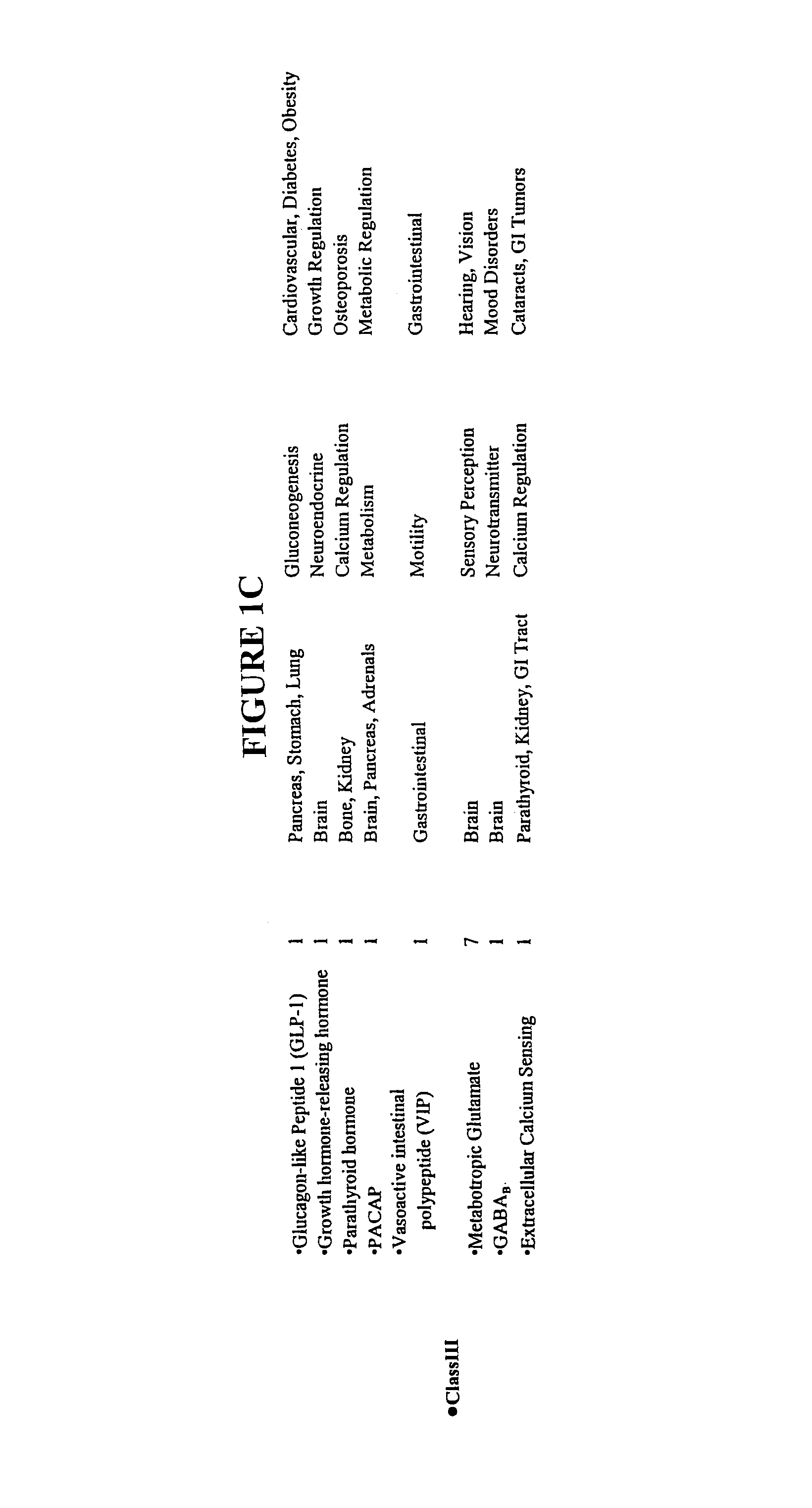Modified G-protein coupled receptors
a technology of gpcrs and coupled receptors, which is applied in the field of modified gprotein coupled receptors, can solve the problems that natural gpcrs do not provide optimal association with arrestin for easy detection, and achieve the effect of enhancing such activity and altering the adverse effects of such presen
- Summary
- Abstract
- Description
- Claims
- Application Information
AI Technical Summary
Benefits of technology
Problems solved by technology
Method used
Image
Examples
example 1
[0271]Construction of plasmids containing the hemagglutinin epitope (HA)-tagged β2AR, βarr2-GFP, βarr1-GFP, β-arrestin1, and β-arrestin2 as described in Ferguson, S. S., Downey, W. E., 3rd, Colapietro, A. M., Barak, L. S., Menard, L., and Caron, M. G. (1996) Science, 271:363–366; Zhang, J., Barak, L. S., Anborgh, P. H., Laporte, S. A., Caron, M. G., and Ferguson, S. S. (1999) J. Biol. Chem., 274:10999–11006; Barak, L. S., Tiberi, M., Freedman, N. J., Kwatra, M. M., Lefkowitz, R. J., and Caron, M. G. (1994) J. Biol. Chem., 269:2790–2795; Barak, L. S., Ferguson, S. S., Zhang, J., and Caron, M. G. (1997) J. Biol. Chem., 272:27497–27500.
[0272]Other constructs were generated by polymerase chain reaction following standard protocols and contain the HA epitope. Chimeric receptors were constructed in which the carboxyl-terminal tails of the β2AR and V2R were exchanged (FIG. 9, A and B), one for the other, after the putative sites of palmitoylation. The β2AR-V2R ch...
example 2
Quantitative Measures of Receptor Binding, Sequestration, Recycling, and Resensitization of β2AR, V2R, V2R-β2AR, and β2AR-V2R Chimeras
A. Receptor Binding
[0282]Receptor binding assays demonstrated that the chimeric receptors were essentially indistinguishable from their wild-type counterparts with respect to their affinity for agonist and level of expression.
[0283]Wild-type and chimeric receptor expression levels were measured on whole cells as described in Ferguson et al., J. Biol. Chem., 270:24782–24789. Transfected HEK-293 cells expressing the V2R and V2R-β2AR chimera were incubated 2 h on ice in PBS containing 2% BSA with a saturating concentration of [3H]AVP, and bound radioactivity was extracted with 0.1 M NaOH. Nonspecific binding was determined under each respective conditions in the presence of 10 μM propranolol, or 10 μm unlabeled AVP. Receptor expression levels varied between 2000 and 4000 fmol / mg of whole cell protein for experiments with βarr2-GFP and between 500 and 150...
example 3
Visualization of βarr-GRP Trafficking
βarr Association with β2AR vs V2R in Presence and Absence of Agonist
[0293]By confocal microscopy, the trafficking of βarr2-GFP and the co-trafficking with β2AR or V2R (detected with GPCR-fluorescent antibodies) were visualized. These experiments demonstrated that 1.) β-arrestin binds β2AR and V2R at the plasma membrane, 2.) the β-arrestin dissociates from the β2AR at or close to the plasma membrane and is absent from endocytic vesicles containing β2AR, whereas, 3.) the βarr remains associated with the V2R in the endocytic vesicles. 4.) The βarr / V2R complex remains in the vesicles. 5.) The β2AR recycles to the plasma membrane. 6.) The βarr association is mediated by the C-terminal tail of the GPCR.
β-Arrestin Internalization into Endocytic Vesicles Visualized with Arr-GFP
[0294]To determine whether β-arrestin internalized into endocytic vesicles, agonist-induced redistribution of the receptor and βarr2-GFP in the same living HEK-293 cell was examine...
PUM
| Property | Measurement | Unit |
|---|---|---|
| temperature | aaaaa | aaaaa |
| Tm | aaaaa | aaaaa |
| time | aaaaa | aaaaa |
Abstract
Description
Claims
Application Information
 Login to View More
Login to View More - R&D
- Intellectual Property
- Life Sciences
- Materials
- Tech Scout
- Unparalleled Data Quality
- Higher Quality Content
- 60% Fewer Hallucinations
Browse by: Latest US Patents, China's latest patents, Technical Efficacy Thesaurus, Application Domain, Technology Topic, Popular Technical Reports.
© 2025 PatSnap. All rights reserved.Legal|Privacy policy|Modern Slavery Act Transparency Statement|Sitemap|About US| Contact US: help@patsnap.com



